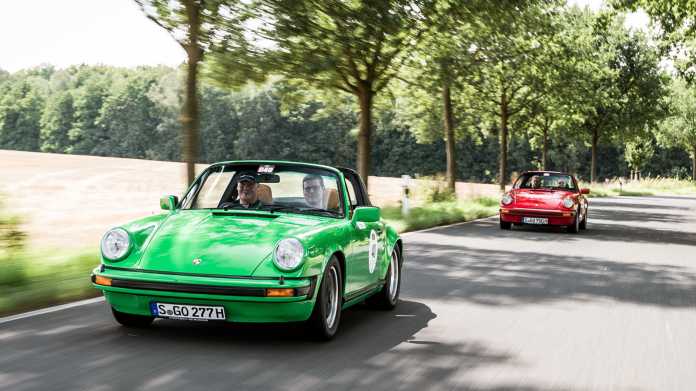The debate about synthetic fuels is currently at an alarming temperature. There is a bitter debate about their part in a drive turnaround. Proponents argue that with so-called e-fuels, the vehicle fleet could be operated in a climate-neutral manner if green electricity were used to produce this fuel. Among other things, the FDP explains why it should still be possible after 2034 to register cars with combustion engines in the European Union. Opponents criticize the enormous energy requirement during production and the overall poor efficiency. Time for an interim status in this heated discussion: We clarify the most important questions about e-fuels.
What is meant by e-fuels?
E-fuels are a subgroup of synthetic fuels that use electrical energy to produce from carbon dioxide and water. Using electricity from renewable energy sources, water is first split into oxygen and hydrogen. Carbon dioxide is then filtered out of the air and converted into e-fuels with the hydrogen via the intermediate step methanol.
In order to artificially produce hydrocarbons from carbon and water, significantly more energy is required than if they are extracted from crude oil. The synthesis of this hydrocarbon took place millions of years ago (with solar energy), so that in the refinery it only has to be broken down into its various long-chain fractions: petrol, kerosene, diesel fuel and lubricant.
Are e-fuels climate-neutral?
If electricity from renewable energy sources is used in the production of e-fuels, they can be CO₂-neutral on the balance sheet. Ideally, no more carbon dioxide is released into the environment during incineration than was produced during production. However, at least two things have to be considered: On the one hand, renewable energy sources also have a CO₂ input, after all, the systems have to be manufactured and set up. In addition, there is the transport of the fuel, for which considerable amounts of energy may have to be used. CO₂ neutrality therefore refers to production and combustion, not to the entire chain of use.
Are e-fuels the future?
This is not only the subject of bitter debates in politics. In essence, it is all about the share of e-fuels in the turnaround in driving energy. Because the fact that the age of fuels based on crude oil is coming to an end is undisputed by all those who seriously deal with this topic. The only thing that is certain so far is that mass production of e-fuels is not imminent. The investments required for this are extremely high.
What are the advantages of e-fuels?
Proponents argue that with e-fuels, the fleet of vehicles could continue to be operated in a climate-neutral manner. Neither new cars nor any other infrastructure for distributing driving energy would be needed. Excess green electricity can be used for production. This would make e-fuels climate-neutral, so the conclusion. Liquid fuel can also be refilled faster than a battery can be charged today. The time to make a car fit for further kilometers is therefore shorter.

Sensible use of e-fuels: With them, for example, classic cars can be driven with a CO₂-neutral balance. However, the costs for this are currently high.
(Picture: Porsche)
What are the disadvantages of e-fuels?
Opponents counter that in the foreseeable future there will hardly be any excess green electricity available on a global scale. In order to be able to operate the expensive systems profitably, they would also have to be operated permanently – and not just temporarily when green electricity is available, which would otherwise have to be curtailed.
also read
Above all, however, the production of e-fuels is very energy-intensive. The level of efficiency from production to the wheel is well below that of a battery-electric car. Expensive production facilities and high energy requirements during production also suggest that e-fuels will not be cheap according to current estimates, even taking into account possible economies of scale. Not to forget: the use of e-fuels in combustion engines may have a CO₂-neutral balance. They do not change anything locally in terms of exhaust gases or the noise from combustion engines.
Where are e-fuels still useful?
The short answer to this is: Everywhere where it is difficult or impossible to decarbonize otherwise. So it would be conceivable that aircraft engines could be powered by e-fuels. E-fuels could also be a solution for parts of heavy goods traffic, although the costs, which are very important in this area, speak against large-scale use. In individual motorization, e-fuels will probably be used primarily in the long term where fuel costs play a minor role. This is the case in racing, where the material costs significantly exceed those for fuel. Even when maintaining classic cars, which are driven a maximum of a few thousand kilometers a year, the fixed costs are often so high that those for fuel are irrelevant.

In motorsport, too, the general costs are so high that those for fuel are negligible.
(Image: BMW)
Is it already possible to buy e-fuels?
The federal government has just paved the way for the sale of e-fuels on the legislative side. Up until now, there have been fuels with an increased proportion of regeneratively generated fuels at a few filling stations in Germany. However, this fuel is noticeably more expensive.
What do e-fuels cost?
Currently, e-fuels are mostly only produced on a small scale, which drives up the costs extremely. A large plant was commissioned in Chile, which could result in significant economies of scale for the first time. These are essential if e-fuels are to be affordable for the majority of drivers at some point. A liter of e-fuels from a small production plant currently has production costs, which should not be confused with the end customer price, of significantly more than four euros per liter. Optimists assume that one liter of e-fuel can be produced at a cost price of around 1.2 to 1.5 euros/liter at some point. With transport, profit and tax, there are then additional costs, which then, together with the pure production costs, form the final price at the gas station.
When are e-fuels coming?
On a very small scale, that will soon be the case. Porsche wants to make e-fuels available to motorsport customers. If the plant in Chile is expanded as planned, around 800 million liters of e-fuels could be produced there every year. However, that should not be the case until the end of this decade at the earliest. Then many buyers also compete for this fuel. Before private cars get the chance to fill up with e-fuels in relevant quantities, they should be used in air and truck traffic.
Recommended Editorial Content
With your consent, an external survey (Opinary GmbH) will be loaded here.
Always load polls
(mfz)
